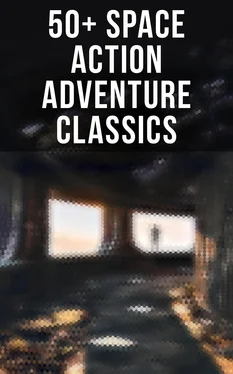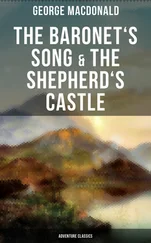It seemed a natural outlet for the surplus of human energy to provide among other things for an enormous development of scientific research and an exploration of the deeper mineral resources of the earth’s crust. The Council assigned something like a third of the resources available for science to biological work, and it does not seem to have occurred to these rulers of the world, preoccupied as they were with the suppression, the excessive suppression, the obliteration even, of deleterious and antiquated separatist doctrines and the refashioning of economic life, that this huge growth of biological enquiry would result in anything more than the extinction of plant and animal diseases, and improvements and economies in cultivation. It was outside the range of their imaginations to anticipate a spate of biological invention that put the spate of mechanical invention which revolutionized the conditions of human life in the nineteenth and twentieth centuries altogether in the shade. Biological knowledge outgrew them just as æsthetic sensibility outgrew them.
From the thirties of the twenty-first century onward the conservatism of the Second Council had held back an increasing amount of scientific discoveries from practical application. The world was unified; it was supporting its population (which was being kept well below the modest safety line of 2000 million) with absolute ease; its health was at a higher level than nature had ever known before; and it was, so far as the powers in being could manage it, marking time. It was like an adolescent who is still treated as a child. Even the new possibilities of exuberant vegetation were not being released. The areas needed for food supply could have been halved before 2050, but the Council decided that the consequent dislocation of the population would be likely to strain social order, and it kept four or five million people at the healthy but not very entertaining work of agricultural production, while it promoted enquiries for the “industrial application of marginal excesses of foodstuffs”. It was not only producing, but distributing, staples in 2050 on precisely the lines adopted in 2020. It was restraining educational developments and innovations in building. It had made the world safe for humanity, and it meant to keep the world at that.
In 2047 Homer Lee Pabst published his remarkable researches on the effect upon chromosomes of certain gases derived from the old Sterilizing Inhalation made from Permanent Death Gas. These gases are known now as Pabst’s Kinetogens, and there is a whole series of them. Their general effect is to produce mutations of various types. They bring about, abundantly and controllably, a variability in life which has hitherto been caused only with comparative rarity by cosmic radiations. By 2050 the biological world was confronted by a score of absolutely new species of plants and — queer first-fruits in the animal world — by two new and very destructive species of rodent. The artificial evolution of new creatures had come within the range of human possibility.
Limitless possibilities opened before the human imagination. The Council gave way to panic. It saw the world it had taken such pains to put in order given over to uncontrollable vegetable and animal monstrosities. A nightmare of evil weeds and strange beasts dismayed it. Even the human type, it realized, was threatened. The laws restraining experiments upon animals were extended, and every animal novelty produced by Pabst was to be reported upon and destroyed. Plant novelties of decorative or economic value were, however, to be tolerated. Within his laboratory and experimental grounds Pabst ignored these prohibitions, and the faculty of science increased the endowment of the new experimental genetics. And now that the Supreme Council could no longer interfere, the Transport and General Distribution Control, the newly developed section of the Behaviour Control and the Health Services took up Pabst’s results and arranged a conference (2060) for their proper exploitation. A general plan for the directed evolution of life upon the planet was drawn up, a plan which, with various amendments, is in operation to this day.
Most of the “wild beasts” of our ancestors are now under control in their special enclosures and reservations. There are fifteen Major Parks of over five hundred square miles in which various specially interesting faunas and floras flourish without human interference, except for the occasional passage of some qualified observer on foot or the transit of a specially licensed aeroplane overhead. Adventurous holiday-makers are excluded. The creatures in these areas are less affected by man than were their predecessors. They form a valuable reserve control of the genetic tentatives that are being made upon their more or less captive brethren. The most startling result of these experiments is Dumoric’s claim to have restored, by means of carefully bred crosses and the cultivation of atavistic types, extinct ancestral forms of the fallow deer.
One beneficial result of the preoccupation of the Second Council with the problem of employment for idle hands and minds had been the very great advances made in both mineralogical and meteorological science. It did not realize that the systematic observation of winds and rainfall could possibly upset its orderly world. Indeed, the prospect of forbidding the wind to blow where it listed was entirely after the Council’s heart. So, too, the possibility of controlling or drying up volcanoes and earthquakes appealed very strongly to it. Before 2000, man’s knowledge of the composition of what he used to call the earth’s “crust” and the mineral resources of the planet beneath that crust was extraordinarily superficial. Geologists relied almost entirely for their knowledge upon surface features, chance exposures, and industrial excavations. But the ever increasing resources available for research made a systematic probing and exploration of the deeper layers increasingly possible. The student will find in any contemporary textbook of Geology an account of the series of beautiful contrivances such as the Shansi borer, the Hull and Watkins “diviner,” and the Noguchi petrograph, which have now made, so to speak, hidden things visible to a depth of twenty-five miles, and there too he will find a description of a score of ingenious devices for isolating blocks of deep-lying rock and bringing their desirable ingredients to the surface. Until a hundred years ago nothing of this sort was even imagined. Instead of employing the energy imprisoned underground to drive what was needed to the surface, the scanty product of the old-world mines was HAULED up by human or mechanical power from above and the ores and coal and salt were actually hewn out in situ by hordes of sweating underpaid human beings.
Equally rapid was the progress of meteorology once the Second Council gave its mind to that subject. Practical meteorology was of very recent date. Except for a little work with the barometer from 1643 onward, forecasting began only in the nineteenth century and was not systematically attempted until 1850. An infinitesimal tampering with the composition of the air began in the early twentieth century. Then man found himself able to withdraw nitrogen from it, but this was done only to provide fertilizers, and in such small quantities as to make no appreciable effect upon the composition of the atmosphere. Little more was attempted until the last war, when the local use of substances like the so-called Permanent Death Gas was carried out on a sufficiently big scale to amount to a transitory readjustment of the air over the region poisoned. Then in the thirties of the twenty-first century there was an extensive use of gas on a large scale to destroy locusts, rodents, and various insect pests. Considerable enthusiasm was shown at the time, but one or two unfortunate accidents cooled the zeal of the Council. It was realized that air-mixing for anything but stimulating and purifying purposes must wait upon the achievement of wind control. Air-mixing was put back into the pigeonholes with a gathering number of other gifts from science that the Council deemed premature.
Читать дальше











